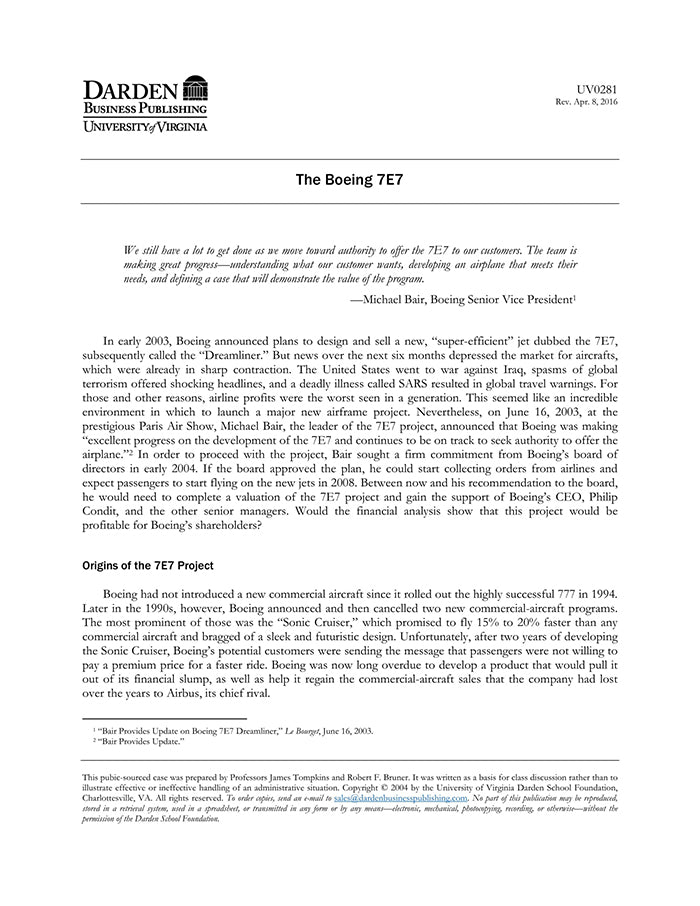The Boeing 7E7
受取状況を読み込めませんでした
This is a Darden case study. In 2003 The Boeing Company announced plans to build a new "super-efficient" commercial jet called the "7E7" or "Dreamliner." This was a "bet the farm" gamble by Boeing, similar in magnitude to its earlier introductions of the 747 and 777 airliners. The technological superiority of the new airframe and the fact that it would penetrate a rapidly growing market segment argued for approval of the project. On the other hand, the current market for commercial airplanes was depressed, reflecting terrorism risk, war, and SARS, a contagious illness resulting in global travel warnings. Boeing's board of directors would need to weigh these considerations in granting final approval to proceed with the project The task for students is to evaluate the 7E7 project against a financial standard, the investors' required returns. The case gives internal rates of return (IRR) for the 7E7 project under base case and alternative forecasts. The students must estimate a weighted-average cost of capital (WACC) for Boeing's commercial-aircraft business segment in order to evaluate these IRRs. As a result of this analysis the students identify the "key value drivers" and distinguish, on a qualitative basis, the key gambles Boeing is making. The general objective of this case is to exercise students' skills in estimating a weighted average cost of capital and cost of equity. The need for students to estimate a segment WACC draws out their abilities to critique different estimates of beta and to manipulate the levered-beta formulas. Boeing competes in both the commercial aircraft and defense business; thus, deriving the appropriate benchmark WACC for the 7E7 project requires isolating the commercial aircraft component from Boeing's overall corporate WACC. In doing so, students engage the concept of value additivity.
【書誌情報】
ページ数:23ページ
サイズ:A4
商品番号:HBSP-UV0281
発行日:2004/7/29
登録日:2016/5/12


